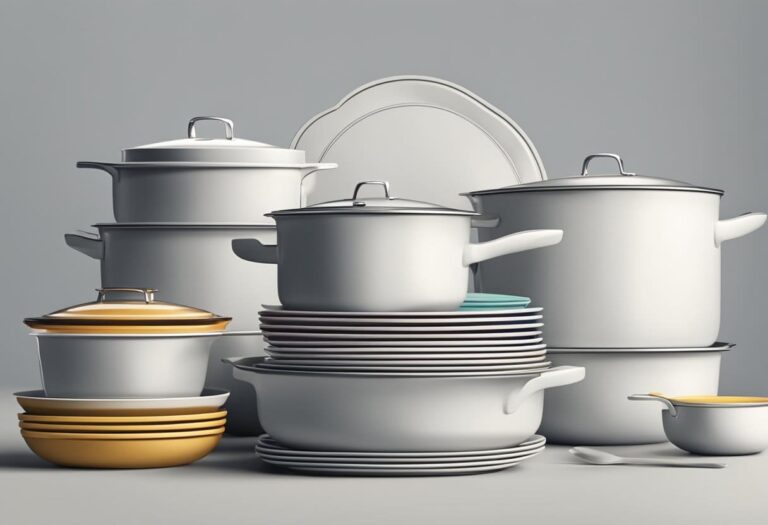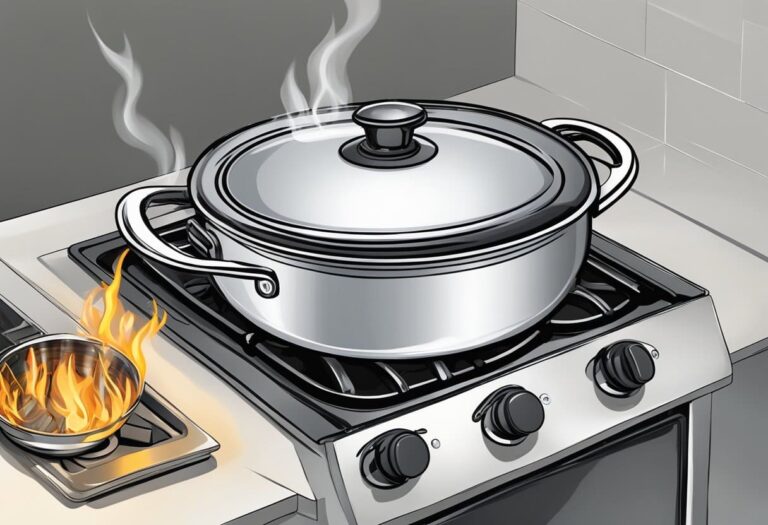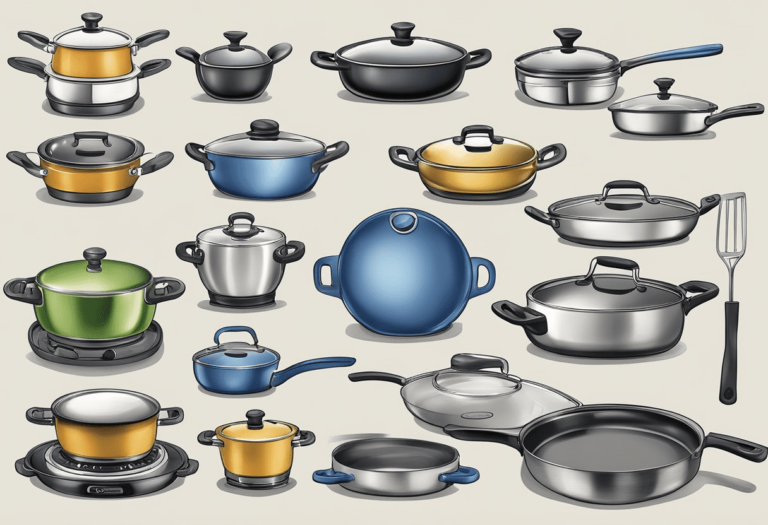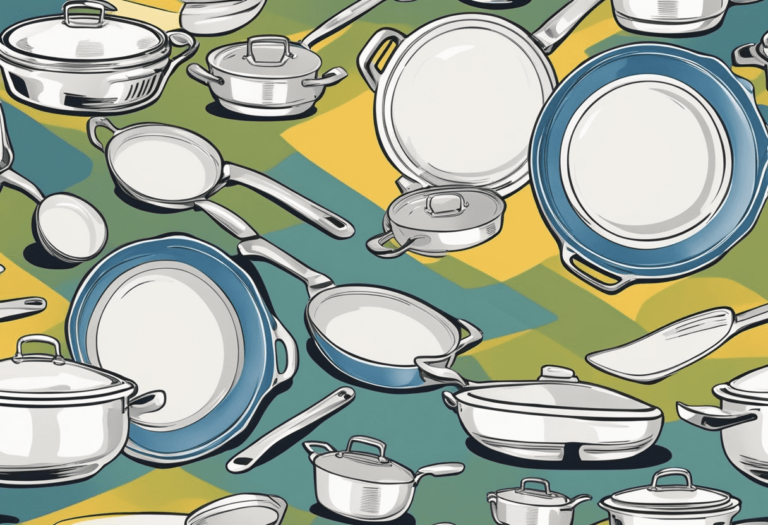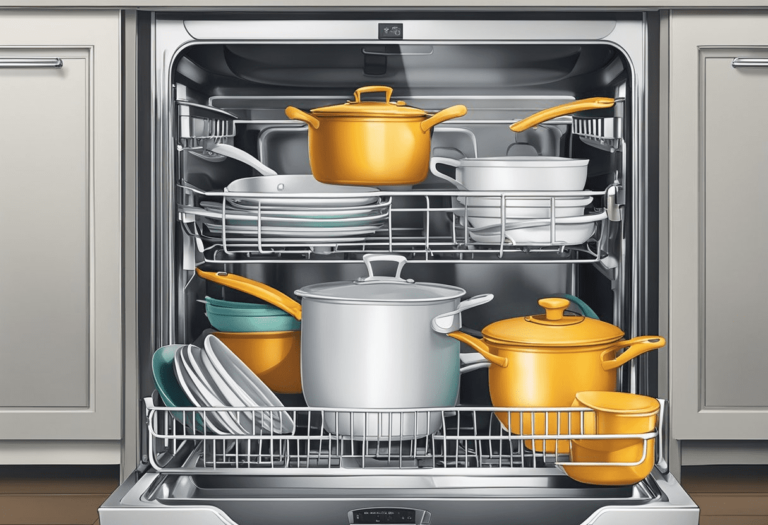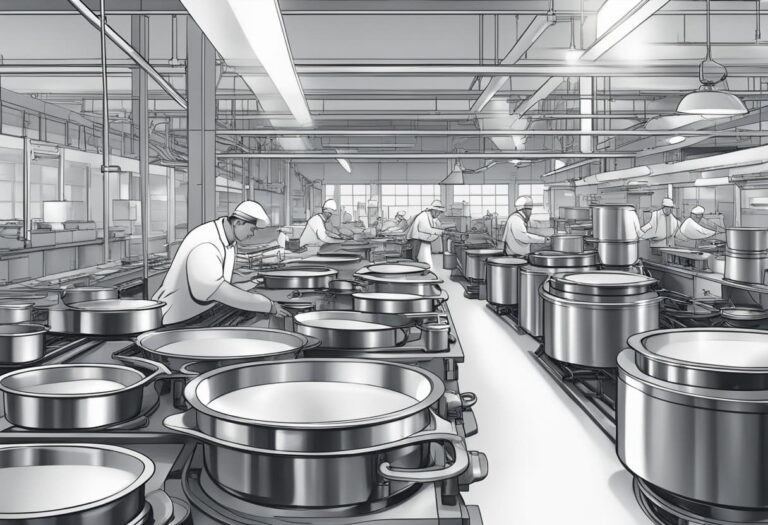For generations, home cooks and professionals have relied on the durability and cooking performance of Deane and White cookware. These iconic pans, with their vintage style, have stood the test of time. But can these workhorse pans also withstand the high heat of an oven? What about the newer nonstick versions – are they oven-safe, too?
The short answer is it depends. Read on to learn the oven safety facts for these classic kitchen brands. We’ll cover how materials, age, attached parts, and other factors determine whether your Deane and White pans can bake or need stovetop simmering. Got vintage carbon steel or enameled cast iron pans? We’ve got guidance on safe oven use. I’m wondering if that nonstick frying pan can go in. We decode which ones take the heat versus require stovetop spoonin’.
This post shares tips so you can safely use your Deane and White pans for more versatile cooking. Let’s get cookin’!
How Materials Impact Deane and White Pan Oven Safety

When considering oven safety, it’s important to understand what materials make up your Deane and White pans. There’s variation across eras, product lines, and individual pieces. Let’s decode how common materials impact oven suitability:
- Vintage Carbon Steel – Earlier vintage Deane and White pans were often made of heavy-gauge carbon steel coated in shiny, chip-resistant porcelain enamel. This makes most vintage pans oven-safe to about 500°F. The enameled coating prevents rusting and provides an ultra-smooth, nonstick surface. Just avoid enamel chipping by preventing drastic temperature changes.
- Aluminum Core – Many modern Deane and White pans feature an aluminum core sandwiched between stainless steel layers. This provides excellent heat conductivity and control. Pans without nonstick coating can safely go in the oven up to around 500°F.
- Nonstick Coatings – Some Deane and White pans feature PTFE or ceramic nonstick finishes. These should not go in the oven due to the lower heat tolerance that can damage the coating.
- Attachments – Knobs, handles, and other attached parts on Deane and White pans may not withstand oven temps. Verify these parts are oven-safe before inserting any pan.
In summary, vintage enameled carbon steel and modern aluminum core pans without nonstick coating are the most oven-friendly options.
Key Considerations for Oven Safety with Deane and White Pans
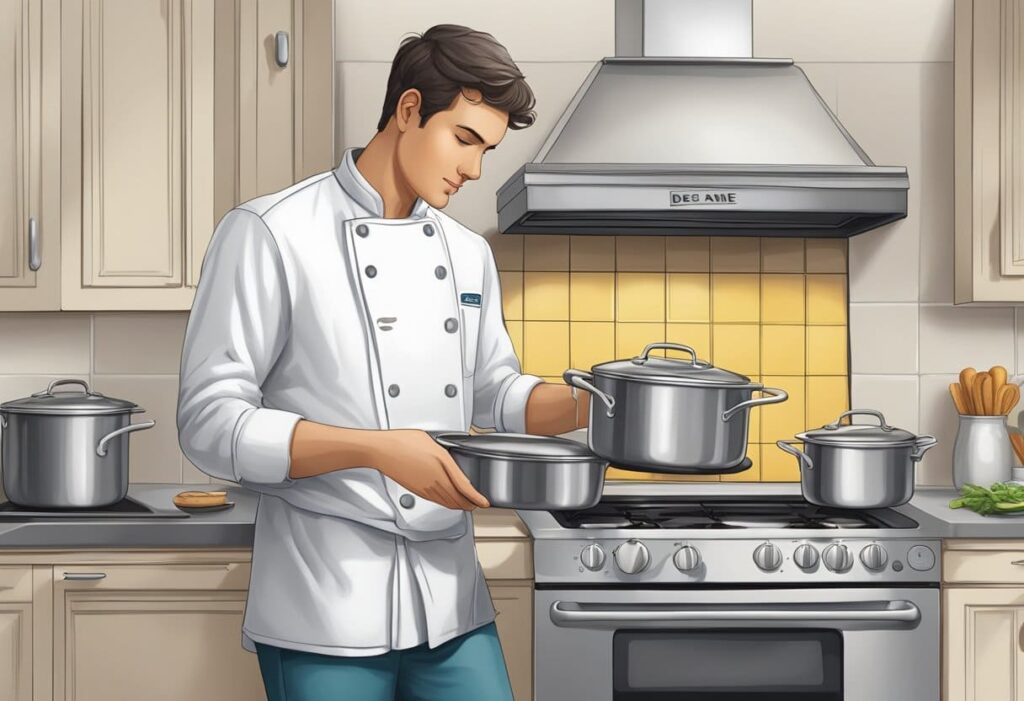
Beyond just materials, there are some other factors to consider when deciding whether your Deane and White pans can handle oven use:
- Thermal Shock – Always preheat pans gradually before oven cooking. Drastic temperature changes, like putting an icy pan into a hot oven, can damage materials from thermal shock. Let pans warm up slowly to prevent cracks or warping.
- Manuals & Packaging – Product packaging often indicates oven safety guidance. Look for labels with max oven temps or any warnings.
- Visual Cues – Examine your pans closely. Chips, cracks, warping, or signs of damage mean play it safe on the stovetop only. The pristine condition provides more assurance of oven readiness.
- When in Doubt, Simmer – Unsure about putting a pan in the oven? Don’t risk potential damage. Default to stovetop simmering instead when oven safety is uncertain.
Following oven-safe best practices preserves your cookware for lasting performance.
Deane and White Pans Suitable for Oven Cooking
Based on all the oven safety factors covered, here are the Deane and White pan varieties that can go in the oven:
- Vintage Enameled Cast Iron – These heavy-duty vintage pans with porcelain enamel coating are oven-safe up to 400°F. Great for oven braising, baked dishes, and more. Just avoid enamel chipping with thermal shock.
- Vintage Carbon Steel Fry Pans – Uncoated vintage carbon steel pans heat evenly in the oven up to around 400°F. Perfect for oven-frying chicken, cooking frittatas, or baking cornbread. Keep an eye out for warping.
- Modern Stainless Steel Core Pans – Aluminum core pans allow even heating on any cooking surface. Those without nonstick coating safely go in a 500°F oven.
- Enamel Coated Bakeware – Roasters, dutch ovens, and baking dishes with enamel coating are designed for oven cooking up to oven max temps. Avoid enamel chipping.
- Individual Oven-Safe Pieces – Some Deane and White skillet or pan models may specify oven safety up to certain temperatures. Check packaging.
While the above pans can take oven heat, attached parts may still restrict use. And, of course, you’ll want to avoid putting these Deane and White pans in the oven:
- Nonstick coated fry pans and sauté pans
- Unknown pans lacking oven guidance
- Damaged, chipped, or warped pans
For safe oven cooking, gradually preheat vintage cast iron or carbon steel pans first. Use oven mitts when handling hot pans. Allow gradual cooling as well. With care, these durable pans deliver delicious oven-baked flavors for generations.
Tips for Safely Using Your Oven-Ready Pans
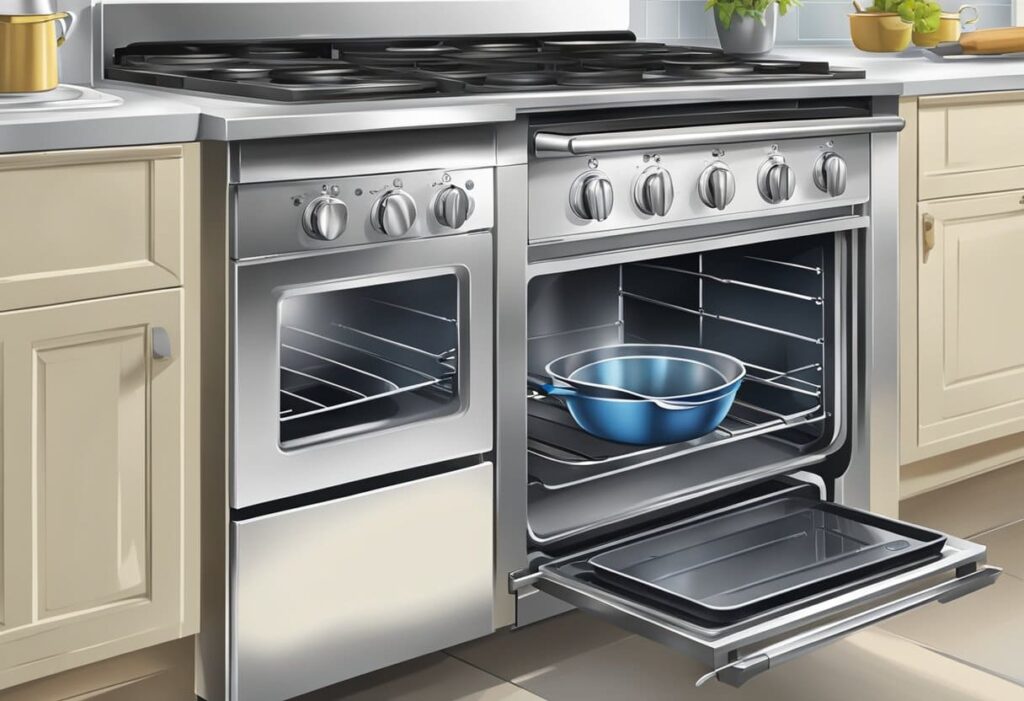
You checked your owner’s manual, inspected carefully for damage, and confirmed oven-safe materials. Your Deane and White pans passed all the tests and are ready for oven cooking! Here are some top tips to get the most from your oven-ready pans while avoiding mishaps:
- Gradual Heating & Cooling – Prevent thermal shock by allowing pans to preheat before oven use gradually. Don’t put an icy cold pan into a hot oven. After cooking, let the pans cool gradually as well. Sudden tempo changes risk cracks and warping.
- Oven Mitts are a Must – Those handles get hot! Remember to carefully remove pans from the oven and use them during cooking with well-insulated oven mitts. Leave hot pans on trivets or cooling racks.
- Keep it Low-Moisture – When baking in vintage cast iron or carbon steel, avoid high-moisture dishes that may rust the pan surface. Use liners or silicone covers if needed.
- Prevent Chipping – Vintage enameled pans can chip if dinged against oven racks. Use soft potholders to insert and remove to prevent enamel scratches.
- Hand Wash to Protect – While enameled surfaces are durable, hand washing maintains a smooth finish. Avoid abrasive scrubbers. Dry completely.
Treat your oven-ready Deane and White pans with care, and they will deliver delicious oven meals for years to come!
What If You’re Unsure About Oven Safety?
Perhaps you stumbled upon long-forgotten Deane and White pans in a thrift shop or handed down from grandparents. There are no clues about materials or oven safety. Or that the vintage pan has seen better days with some scratches and chips. When in doubt about oven readiness, err on the side of caution.
Here are some smart tips to avoid mishaps if oven safety is uncertain:
- Do the Magnet Test – Use a fridge magnet to test pans. Magnet attraction to vintage cast iron or carbon steel means oven safe. No pull indicates newer aluminum and stainless pans unsuitable for the oven.
- Spot Clean Only – Avoid immersing vintage enamel-coated pans in water until confirming ocean safety. Moisture can damage the enamel over time. Gently clean with a non-abrasive scrub pad.
- Inspect Closely – Look for markings like “Oven Safe to XXX°F.” Examine for cracks, warping, rust spots, or chipping around rims. Signs of damage warrant stovetop use only.
- When Uncertain, Simmer – If age, materials, or oven safety guidance are unclear, don’t risk it. Use unknown pans for stove cooking only. You can always enjoy favorites like frittatas and gratins prepared on the stovetop or in a toaster oven.
With a little sleuthing and close inspection, you can uncover whether that vintage find or old hand-me-down can safely go in the oven or needs stovetop simmering. Investigate oven readiness before cranking up the heat.
Shop Smart for Versatile Deane and White Cookware
Ready to grow your kitchen arsenal with Deane and White’s classic styling and cooking performance? Keep versatility in mind as you shop varying models. Seek out oven-friendly features so you can sauté, sear, bake, and more! Here are some smart tips for picking pans to use on the stovetop or in the oven:
- Vintage Appeal – Keep an eye out at antique shops, flea markets, and online auctions for vintage carbon steel and enameled cast iron pans. Well-loved heirloom pans offer oven versatility. Check for chipping and damage.
- Multi-Ply Construction – Look for tri-ply or multi-ply pans with an aluminum core sandwiched by stainless steel. This combination allows stovetop searing and oven cooking up to 500°F.
- Enamel Coating – Beautifully colored enamel interiors resist staining and deliver easy release. Safe for oven cooking if the enamel lacks chips or cracks from age or use.
- Oven-Safe Handles – Verify panhandles and knobs are oven-safe to the pan’s maximum oven temp. Metal handles withstand higher oven temps than materials like plastic.
- Nonstick Caveat – While nonstick coatings allow easy food release, they limit oven safety. Avoid nonstick Deane and White pans if seeking an oven-to-tabletop workhorse.
With an array of toxin-free, PFOA-free, nonstick options, you don’t have to sacrifice convenience when selecting oven-safe cookware. Invest in Deane, and White pans able to handle the stove and oven so you can flex your cooking skills.
Conclusion
From searing steaks to baking casseroles, Deane and White pans have been kitchen workhorses for over 130 years. Knowing which vintage and modern pans from this iconic brand can move from stovetop to oven expands your cooking options. Certain materials like vintage enameled cast iron and modern multi-ply stainless can withstand oven temperatures up to 400-500°F.
Nonstick and unknown pans, on the other hand, warrant stove cooking only. With careful usage and gradual heating and cooling, Deane and White oven-safe cookware promotes delicious results – and memories – for years to come.
What’s your favorite recipe to make start-to-finish in your durable Deane and White pans?

